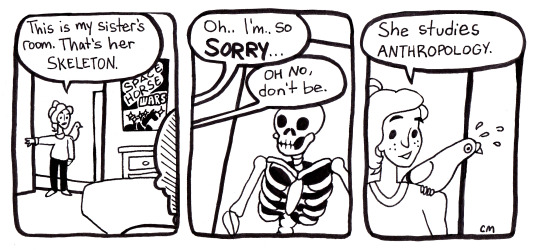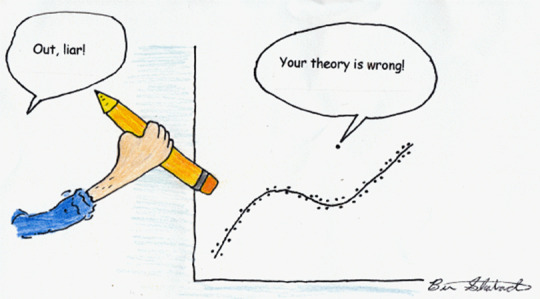Photo
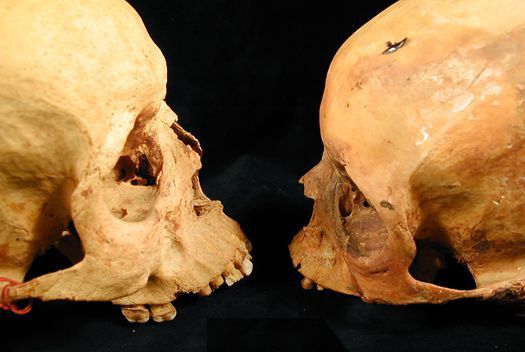
Bioarchaeology and the Ethics of Research Using Human Skeletal Remains
by Sharon N. DeWitte
“In a recent article, Pobst refers to bioarchaeologists as “grave-robbing scientists,” a phrase that negatively and inaccurately describes such researchers. This paper provides an overview of the history of the collection of human skeletal remains by anthropologists and others, which has resulted in misconceptions about current practices in the field, and of the important changes that have been made in recent decades to ensure that bioarchaeological research is done ethically. Recent Black Death research is emphasized as an example of bioarchaeology that conforms to the ethical standards of numerous organizations and avoids the exploitative use of human remains against the wishes of descendant populations” (read more/open access).
(Open access source: History Compass 13/1: 10–19, 2015 via Academia.edu; image: University of Southampton)
217 notes
·
View notes
Video
dr-durington like i swear, it'll happen.
vine
omg
122K notes
·
View notes
Photo
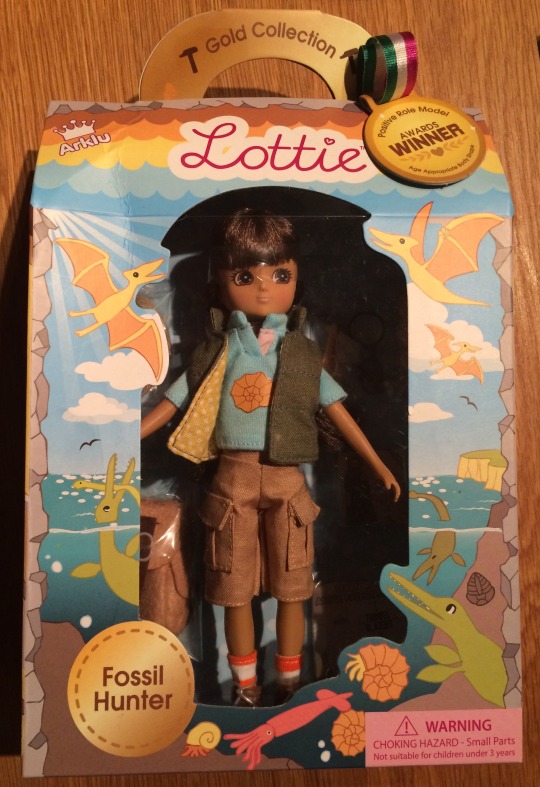

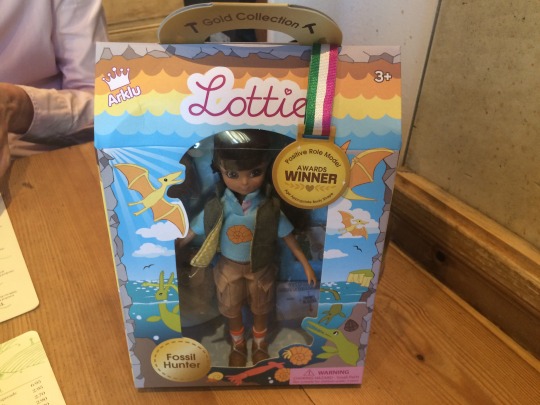
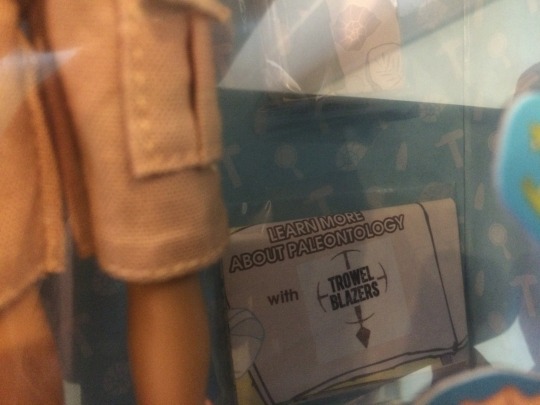
Today we got our hands on our very own Fossil Hunter Lottie Doll, as designed by TrowelBlazers in collaboration with Arklu!
These will be available to buy in May 2015, and we’ll be needing your help to make them a huge success, and make you shops across the world stock them.. So start spreading the word!
More here: http://trowelblazers.com/introducing-fossil-hunter-lottie/
286 notes
·
View notes
Photo
I was the most excited person when they put Archaeology in World of Warcraft.
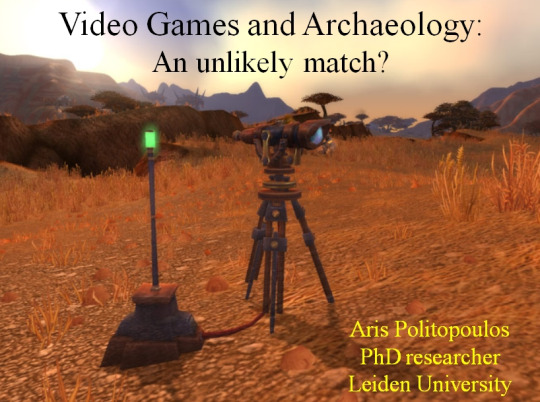
Archaeogaming at the University of Leiden (Guest Post!) Source: http://bit.ly/1zYy3di Introduction Today’s post is by Aris Politopoulos, a veteran gamer and Ph.D student at the University of Leiden. He recently spoke to his friends at Leiden’s Archaeology Forum on the subject of Archaeogaming. Here’s his tale, with links at the bottom to the presentation and video of the lecture. (image) Archaeogaming at Leiden Archaeology and video games is a concept that has been in my mind for the past few years. When I discovered that there other people around the world also concerned with this specific field of study, I was amazed and inspired to start approaching the topic………. Read More
Read and find more great archaeology blogs at: Archaeology Blog Project
38 notes
·
View notes
Text
Trying to post this the first time made my browser crash
There are emojis all through this paper and if you cannot see them you are missiinnngg oouuuttttt
Alexi Tarlton
12/15/14
Anth 352
But Really It’s Just 💩 (Poop Emoji)
As technology has advanced the public’s forms of communication, the language of communication has evolved with it. The evolution of communicating emotion through typographical art appears to be the most popular way of displaying meaning, without having to write out word for word what an individual intends. Emoticons and emojis have escalated as different platforms accommodate their usage. Emoticon is a word smash of emotion and icon, and depicts visual cues formed from typographical symbols that represent feelings or emotions (Ganster, 2012: 226). The term ‘emoticon’ appeared in print for the first time in 1990, was added to the Oxford dictionary in 2001, and became official Internet lingo in 2002 after it was published on Urban Dictionary (The History of Emoticons, 2014). Emojis are small digital pictures or pictorial symbols that represent a thing, feeling or concept that is used in electronic communications and usually part of a standardized set (Schwartzberg, 2014). Although, they were originally the ideograms or smileys used in Japanese electronic messages and webpages, the use of which is spreading outside Japan (Schwartzberg, 2014). These characters are used much like the emoticons, but a wider range is provided. These icons have become standardized and are typically built into cellphones now. Emoticons and emojis have become a version of non-verbal communication, and the usage for these symbols are interpreted differently from one person to another.
“The expression of emotion in face-to-face interaction depends largely on nonverbal cues” (Derks, 2008: 99). The use of electronic mail, texting, and chatting eliminates the visual cues the body language provides, such as head nodding or facial expressions; therefore users of these forms of communication often incorporate emoticons as visual cues to augment the meaning of textual messages. “She texted me an emoji of 💸 ‘money with wings,’ which may mean she’s out shopping.” While this sentence is mostly used as an attempt to make sense of what an emoji is, it also shows that emojis have a numerous amount of meanings depending on how they are used, and how they are viewed. For instance, in this case, the money with wings emoji is used to represent shopping, where as it could also mean a payday, free money, flying money, or many other things that change depending on the context. Similarly, misinterpretations of just a plain text message can be avoided by the use of emoticons, such as the use of a smiling emoticon, which can reduce the ambiguity of a message. On the other side of that coin is that if the direction of the text’s meaning and the meaning of the emoticon are opposite, more ambiguity may be created (Ganster, 2012: 226-227).
What appears to be the first published use of emoticons can be seen within a 1881 copy of a United States humor magazine, Puck, which printed four different types of typographical art. These displayed joy, melancholy, indifference, and astonishment. “The following are from Studies in Passions and Emotions”

Whether or not this is actually the first use of emoticons ever is under hot debate by several people. One man claims that Shakespeare was the first to use it is in A Winter’s Tail, Act I, Scene ii in reference to Sir Smile, whereas another historical newspaper specialist believes he has found a winking smiley face embedded in The New York Times transcript of an 1862 speech given by President Lincoln. However, this was proper punctuation at the time, so it is debatable.
The first documented online usage of emoticons was by Scott E. Fahlman, who suggested that they be used as a way of communicating emotion, to avoid confusion when posting online. (The History of Emoticons, 2014). The older examples of emoticons and emojis that took their time in becoming established within the language of electronic based communications. Social media has helped the progress of new emojis and emoticons travel around the world. What is new in the way in which social media alters and amplifies social situations is that it is offering technical features that people can use to engage in these well-established practices (Boyd, 2012: 13). Now that an individual has seen one symbol used in a chat room, they can now use it within Facebook, Tumblr, or Twitter and allow it to spread even further.
The simplicity and ease with which people can share media online is unrivaled, which can be powerful and problematic (Boyd, 2014: 12). For instance, there is an article solely dedicated to the oral history of the poop emoji.💩 I’m not saying it’s a bad thing, but I’m not saying it’s a good thing, either. Regardless of the subject matter, it does bring to light how information is able to spread easily online. With the popular use of emojis specifically, one can observe just how quickly and vast the Internet and social networking really is. The emoji began in 1999 in Japan, with a small set of graphics. Users could really only text emojis to those using the same telecom carriers, which in this case were KDDI AU, SoftBank, and NTT-DoCoMO (Schwartzberg, 2014). However, these telecom carriers did not have the same set of code points for their images.
Currently, when one user sends a smiling poop face from an Apple phone to a friend’s Android, the iPhone is sending data (known as a code point) to the Android. The Android understands this code point and has it’s own specific design for the same emoji. An organization called the Unicode Consortium ensures that the code points are the same and recognized among all devices and services (Schwartzberg, 2014). Which is why when you send a smiling poop face to your friend, your friend sees a smiling poop face. However, this was not the case in 1999. Since telecom carriers had not coordinated their code points, Japanese users were “on the constant brink of a social meltdown: sending a 👍, say, could result in a 👎 on a different carrier’s phone” (Schwartzberg, 2014). This was a continuing issue until 2007, when Google partnered with KDDI AU and decided to use emojis for Gmail. Google then volunteered to fix the code for all of the telecom companies once and for all.
As expected, Facebook has jumped right on board with creating it’s own emojis to use in it’s chat program, and now to be used within the comments of status’s and photos. Their program used to have simple emojis, such as plain smilies with yellow faces, but it has now evolved into ‘stickers’ that are either rather large emojis or mini gifs that can be used in a variety of ways, launched in April of 2013 (Constine, 2013). Their emojis were not completely listed at first, creating an interesting game out of attempting to find their ‘hidden’ emojis (^^^) (THE SHARK EMOJI WONT SHOW UP HERE) (This guy is my favorite). Due to this, many websites have formed that claim to have all of Facebook’s ‘secret’ emoticons. Since the launch of Stickers, Facebook has opened up their application to allow others to create themed emojis that can be downloaded to an individuals account. Themes such as Power Rangers, Pusheen, Beast, Prickly Pear, and Snoopy have all been integrated through user demand and creation. These Stickers allow users to use a specifically represented emotion that appeals to them the most, rather than the only one available. For instance, I typically feel like a Power Ranger, which is why I use those Stickers so often, whereas Bryce now likes to use Pusheen because she “likes cats.” However, when I asked her about her favorite Sticker, she said she did not have a favorite, so perhaps they are not as popular as originally thought. Then again, this is Bryce, who is even writing about Facebook, but does not know what the Facebook Sticker names are.
While the majority of emoticons that are made by Unicode are vast and interesting, there seems to be an obvious bias as to who they are being made for. The icons used to only depict three generations of a white family, all of which appear to be heterosexual. Saturday Night Live even made a skit on their show about the issue “Unicode, the company that creates Emojis, thought that instead of one black person we needed two different kinds of dragons 🐲🐉, nine different cat faces 😺😸😻😽😼🙀😿😹😾, three generations of a white family 👶👦👧👨👩👴👵, and all the hands are white, too! Even the black power fist is white ✊. But on the plus side, they do have a KKK member that got punched in the face 👻” (Shipley, 2014). Unicode did not have depictions of couples that were not heterosexual until recently, and they are all white as well. While it can be argued that they technically do have ethnically inclusive emoticons, I do not believe that one Asian man 👲, a man with a turban 👳, and a sleepy construction worker count 👷. I would also like to point out that no one appears to be talking about the family’s soulless black eyes 👪.
As the communication through emoticons and emojis evolve, typographical art will continue to become more complex and inclusive so that it can be used on as many platforms as possible. The public will continue to be ‘lazy’ about wanting to express their emotions through text alone, and will continue to incorporate varying amounts of emotions offered through typographical art. Many, myself included, have even gotten to the point of transcribing ideas through emojis alone. Even though it is confusing, it is fun. Emoji’s give people an opportunity to invent codes and expressions that help groups identify themselves as closely associated. This non-verbal communication, within the context with electronic communication, has just been a stepping-stone up from short hand. Idk and wtf were made to be exclusive to certain audiences, just as the definition of a guy wearing shades 😎changes depending on the individual that uses it and the individual that reads it. And yes, even 💩 gets to have it’s own definition depending on the context. It could just mean a happy poop, but I am giving it the benefit of the doubt. I cannot begin to understand just how many uses a single emoji can have, let alone a combination of them. For instance,🐔🐔👏 continues to only mean “chicken chicken clap” or sometimes even “double chicken clap”, although the first is more appealing, to me. It has taken months for me to find the true intended of this set of emojis, and only because I had to bully the meaning out of my significant other by telling him it was for a paper. He said 🐔🐔👏 is ‘emoji slang’ idiosyncratic to our private, personal communication vocabulary. It’s absurd and meaningless in it’s origin but has come to be a positive and intimate expression of positivity and support.” Also known as, he forgot what it means and he is making this up to sound smart. He tried to backpedal by saying that “It’s been adopted by us as a shared code that promotes a sense of rapport and interpersonal bonding“ but we all know he is full of 💩.
Works Cited
Boyd, Danah. It’s Complicated: The Social Lives Of Networked Teens / Danah Boyd.
N.p.: New Haven: Yale University Press, [2014], 2014. USMAI Catalog. Web. 14 Oct. 2014.
Constine, Josh. “Facebook Brings Its Mobile Messaging Stickers To The Web As Their Designer Exits”. TechCrunch. 2 July. 2013. Web. 15 Dec. 2014.
Derks, Daantje. “Emoticons in Computer-Mediated Communication: Social Motives and Social Context.” CyberPsychology & Behavior. 1st ed. Vol. 11. N.p.: Mary Ann Liebert, 2008. 99-101. Print.
Ganster, Tina. “Same Same But Different!? The Differential Influence of Smilies and Emoticons on Person Perception.” Cyberpsychology, Behavior, and Social Networking. 4th ed. Vol. 15. N.p.: Mary Ann Liebert, 2012. 226-30. Print.
The History of Emoticons. By Jeremiah Warren. Prod. Greyson MacAlpine. Perf. Jeremiah Warren. YouTube. Mashable, 23 Sept. 2014. Web. 15 Dec. 2014.
Schwartzberg, Lauren. “The Oral History Of The Poop Emoji (Or, How Google Brought Poop To America).” Fast Company. Fast Company, 18 Nov. 2014. Web. 15 Dec. 2014.
Shipley, Kelci. “Watch What Happens When ‘The Hobbit’ Goes To Work At ‘The Office’” News. MTV News, 14 Dec. 2014. Web. 15 Dec. 2014.
#I would like to point out that i have recieved extra credit this semester and that should be taken into account before reading this paper#final#emojis#uhg#writing
2 notes
·
View notes
Video
youtube
The History of Emoticons- Mashable
#relevant to my paper#watch this thank you#i used this as a source#not sorry#its 3:15 am and i only have like two full pages whoops
0 notes
Text
Okay but what if I just draw a picture of a really awesome dinosaur instead of writing this paper. Is that acceptable?
1 note
·
View note
Link
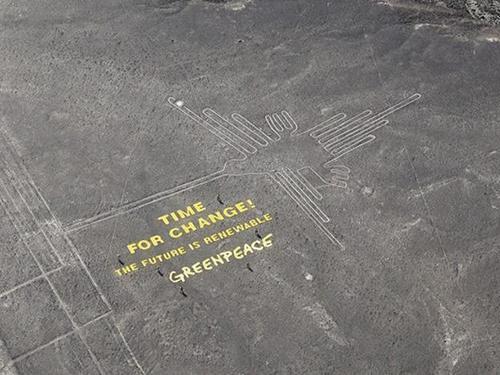
LIMA, Peru — Peru will seek criminal charges against Greenpeace activists who damaged the world-renowned Nazca lines by leaving footprints in the adjacent desert during a publicity stunt, a senior government official said Tuesday.
“It’s a true slap in the face at everything Peruvians consider sacred,” Deputy Culture Minister Luis Jaime Castillo said of Monday’s action by the environmental group at the famed drawings etched into Peru’s coastal desert, a U.N. World Heritage site.
He said the government was seeking to prevent those responsible from leaving the country while it asks prosecutors to file charges of “attacking archaeological monuments,” a crime punishable by up to six years in prison.Read more.
894 notes
·
View notes
Text
Yes hello go to this thing
Instead of using this for student crowd sourcing like a responsible person, here is a straight up shameless self promotion post about the Christmas Special that we have going on right now.
I'm going to be a ninja this Saturday at 2 pm and 8 pm.
So at some point this will be me:
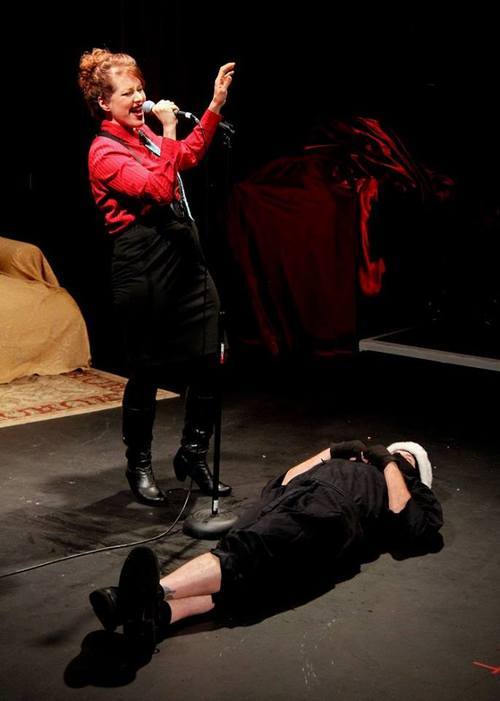
(Probably)
and at another point:
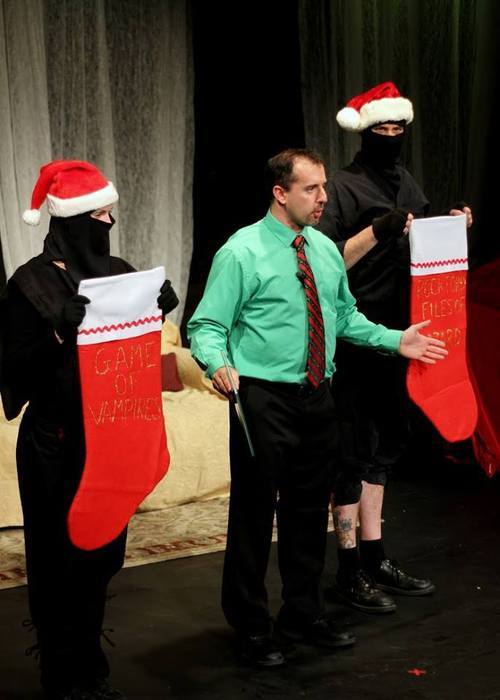
(Probably)
You should come (in your pajamas). It's for charity. Do the thing.
We sing Highway To The Manger Zone, what could go wrong?
The 2 pm show is our Time Travel Matinee. Because bow-ties are coolest at 2 pm.
The 8 pm show is not currently themed, but it'll be the normal Saturday night crazy-ness.
Coupon Code: ALEXIGREEN10
#i s2g go to this it'll be so worth it#it's in glen burnie#dr-durington#dr d you said you would go i'm holding you to it#the family one is on sunday dec 14 at 3 pm
3 notes
·
View notes
Text
For my final paper, I am going to write about the use of emoticons/emojis within the contexts of texting and Facebook.
Emoticons are visual cues formed from typographical symbols, which when read sideways represent feelings or emotions. Emojis are the ideograms or smileys used in Japanese electronic messages and webpages, the use of which is spreading outside Japan. These characters are used much like the emoticons, but a wider range is provides. These icons are standardized and built into cellphones now.
What I would like to discuss is how emoticons have become a version of non-verbal communication, how the usage of emoticons and their interpretations differ from one person to another, and what is used in texting as opposed to Facebook.
1 note
·
View note
Text
tips on writing essays:
skip the title! You can always come back to it
skip the intro! It can often be the hardest part
skip all the body paragraphs
skip the conclusion
skip the whole fucking essay fucking do it who gives a shit
455K notes
·
View notes
Photo
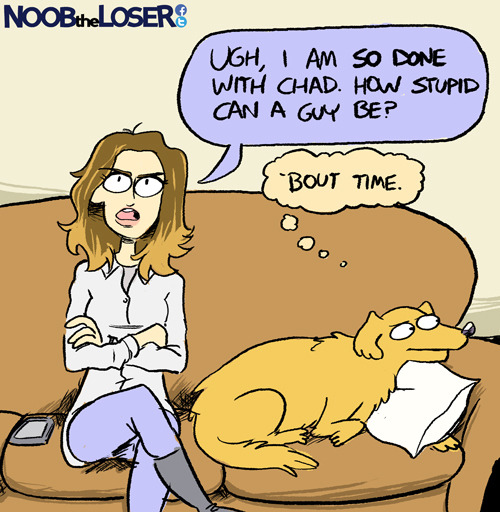
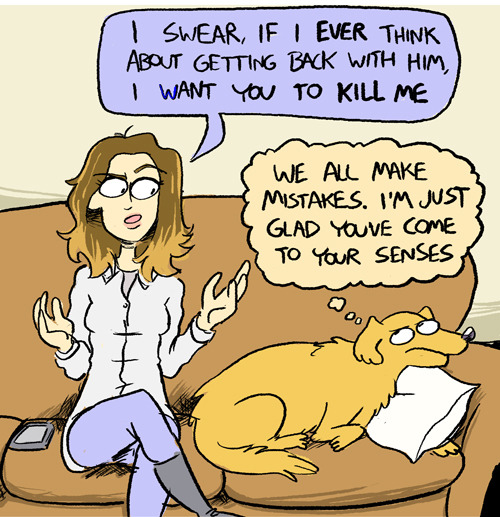
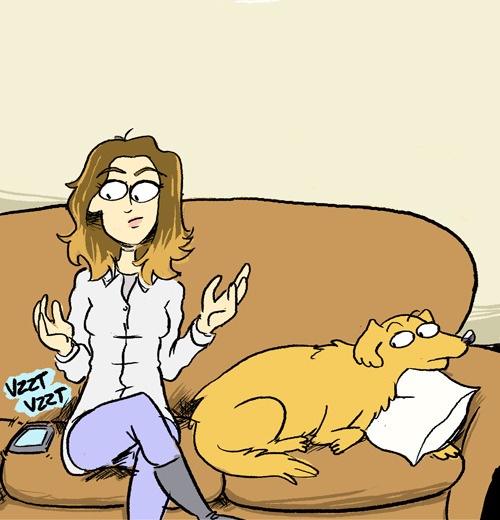
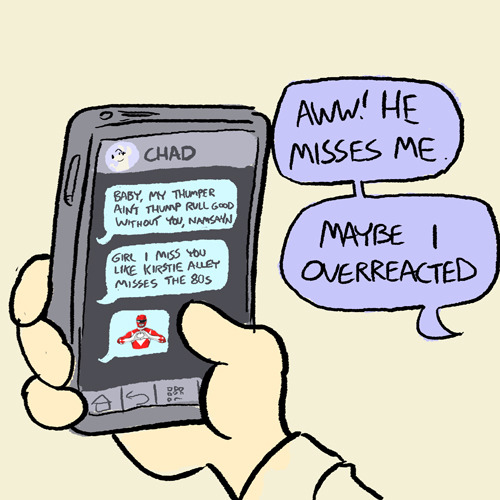
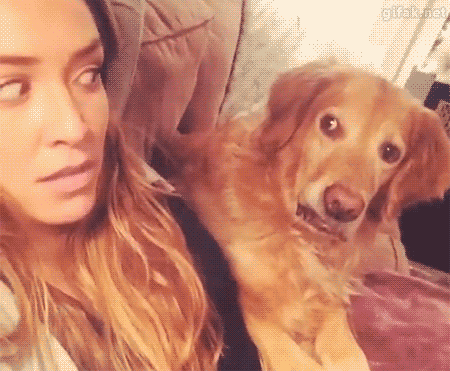
At 4 am when I was making this, it seemed really funny to me.
436K notes
·
View notes
